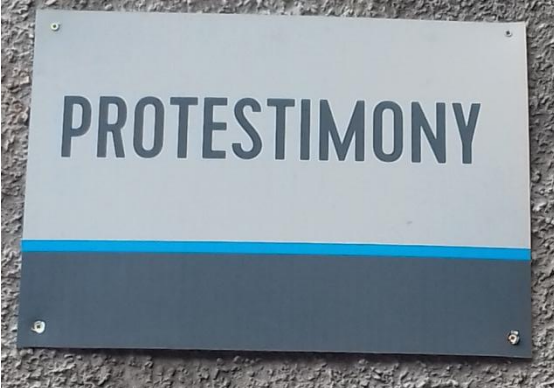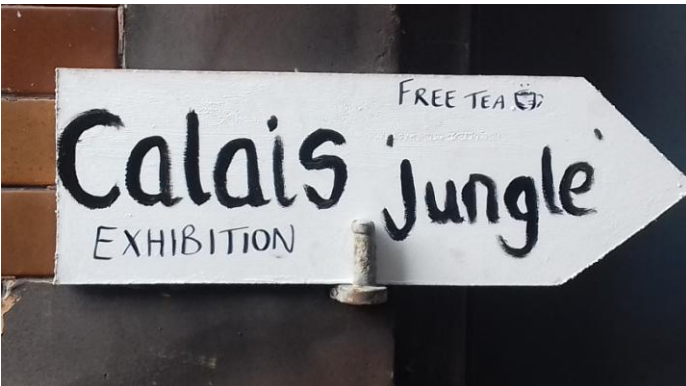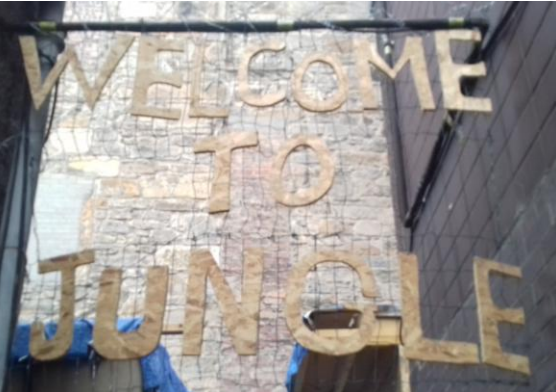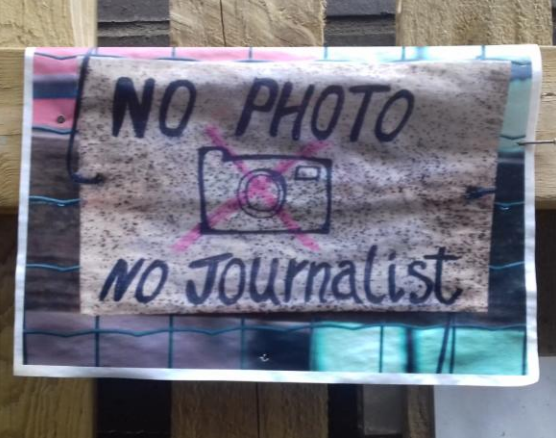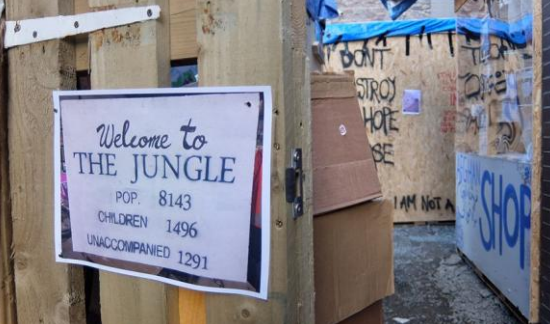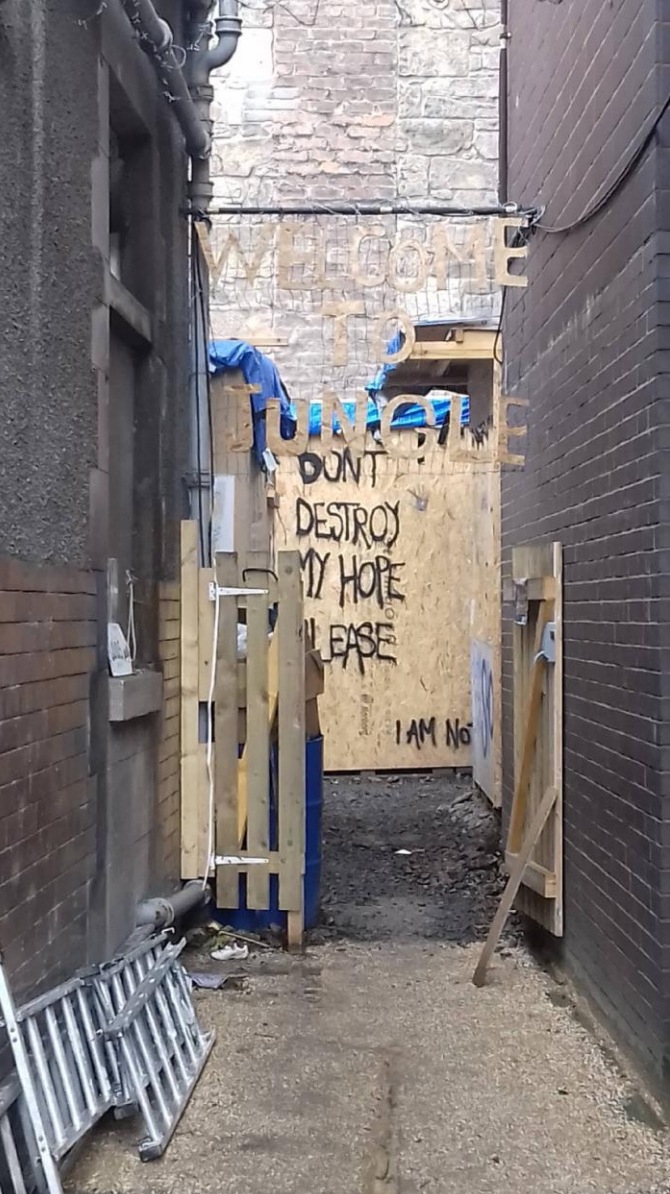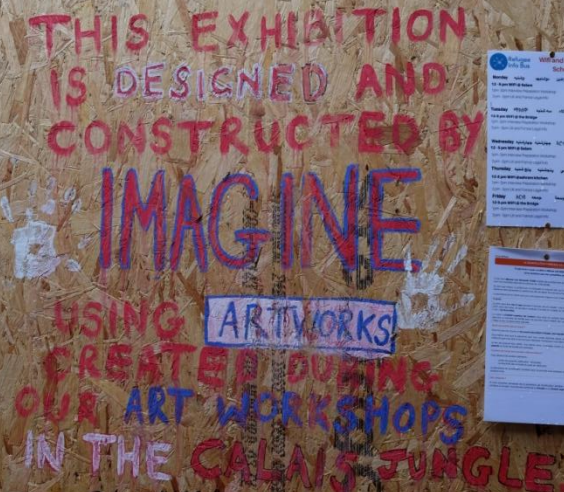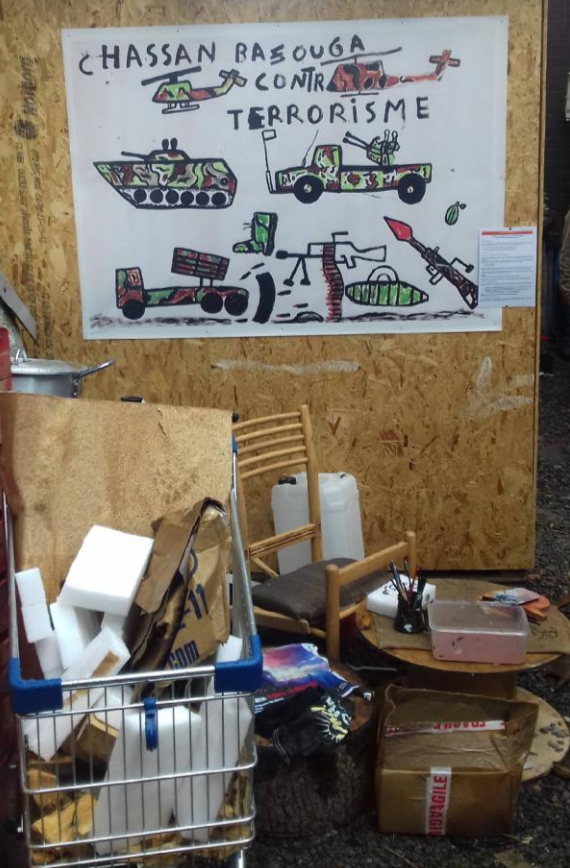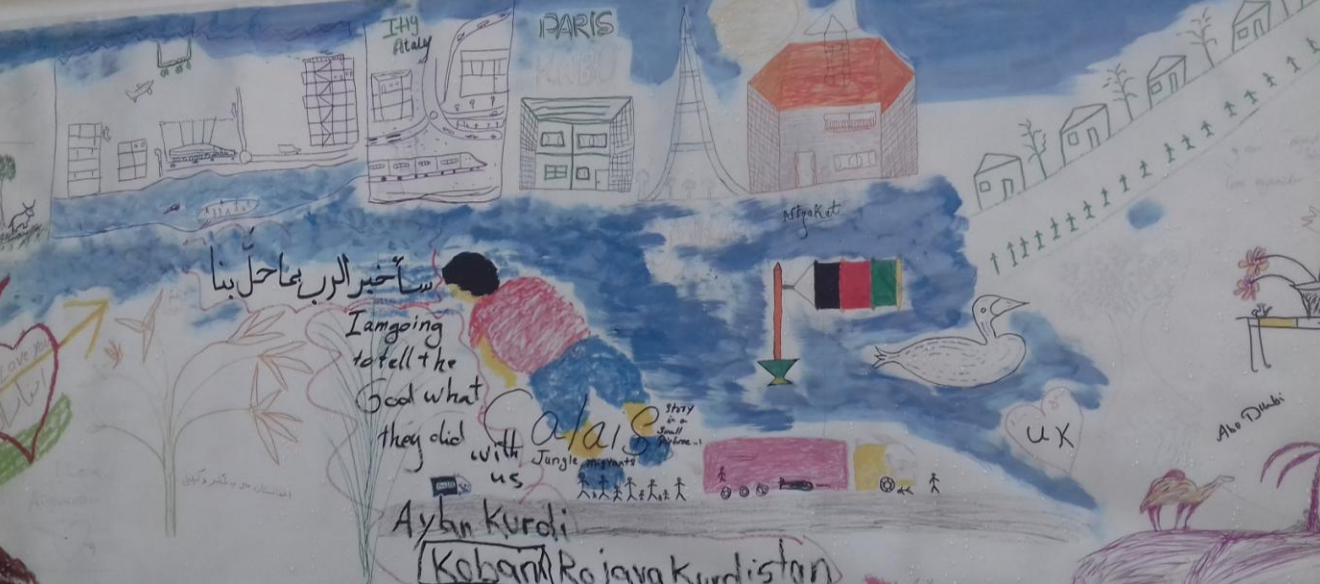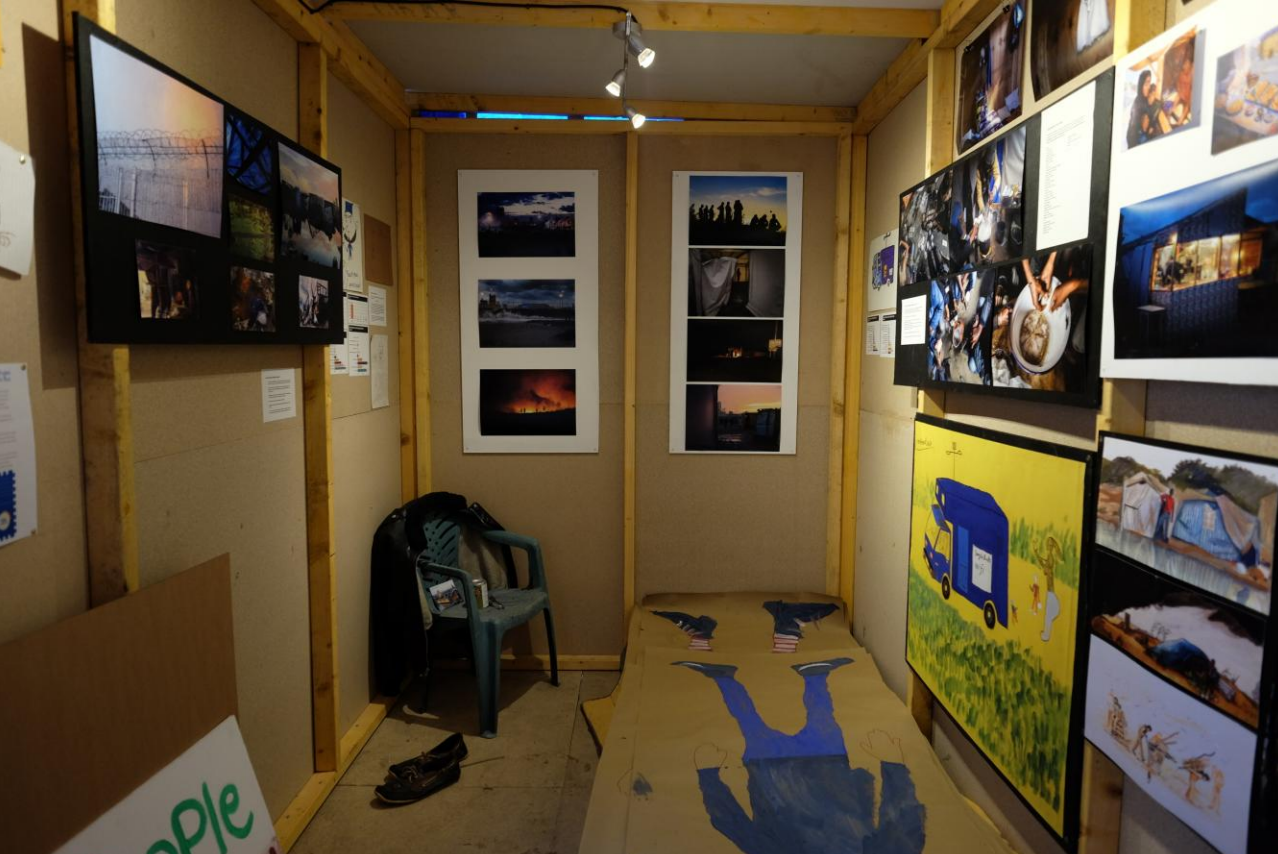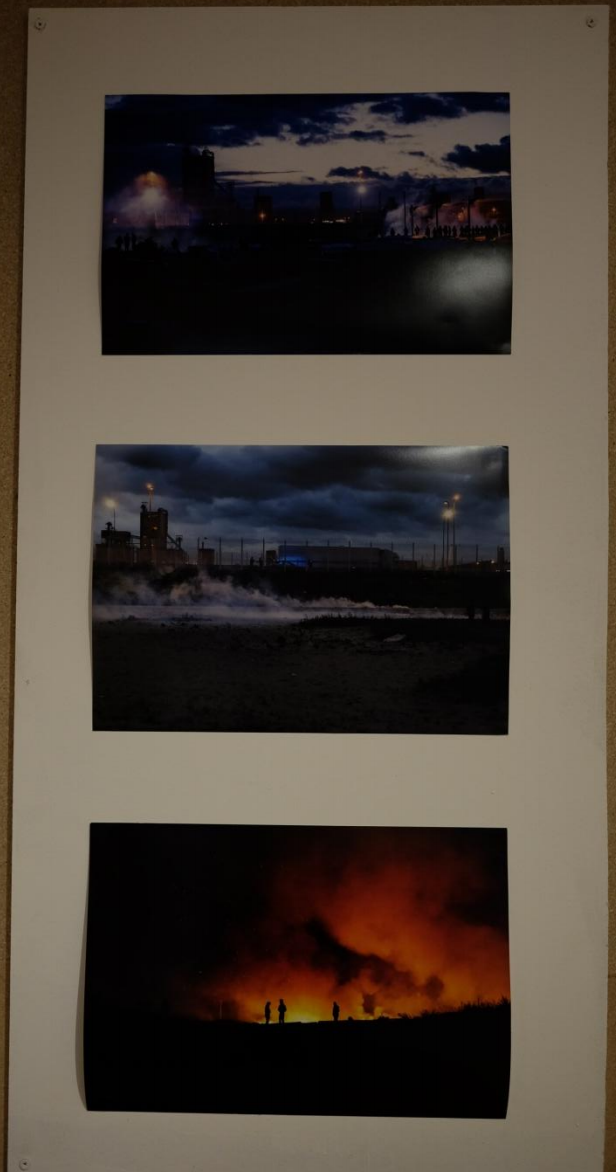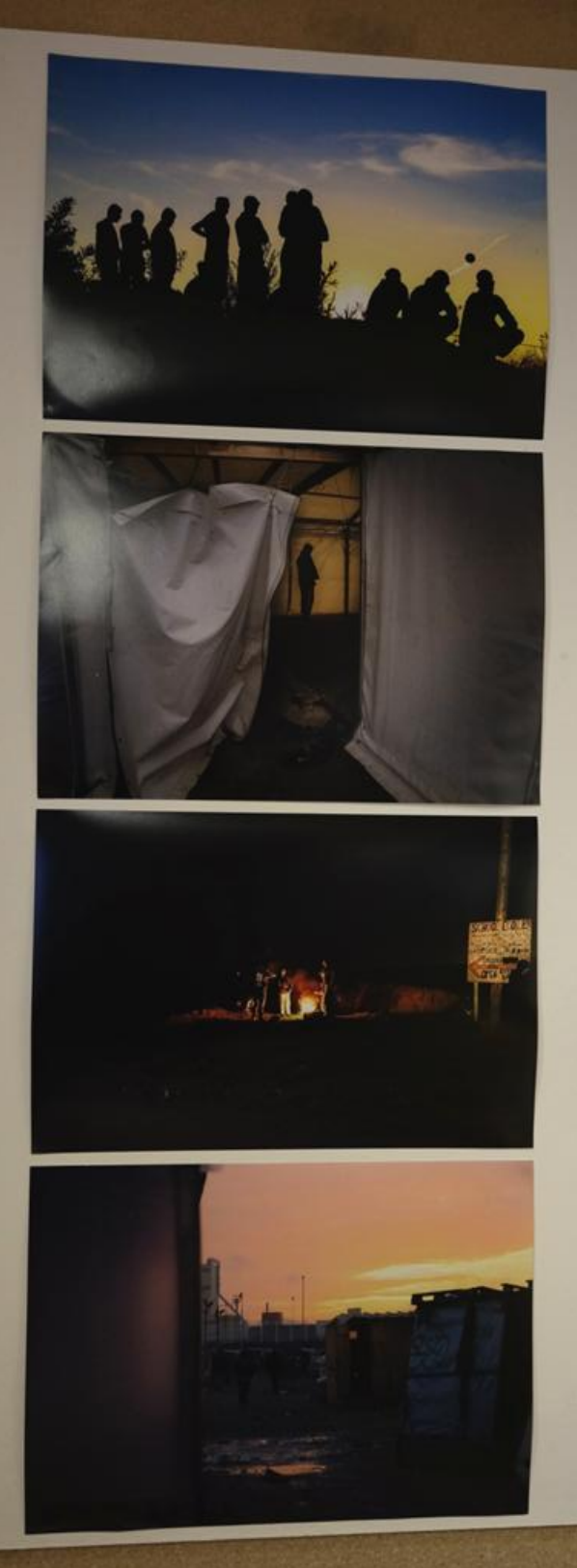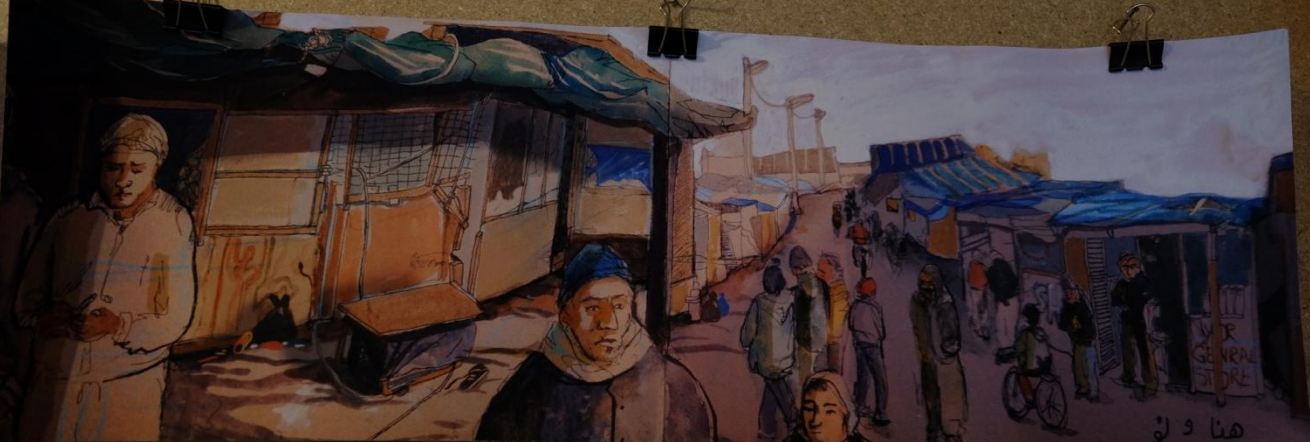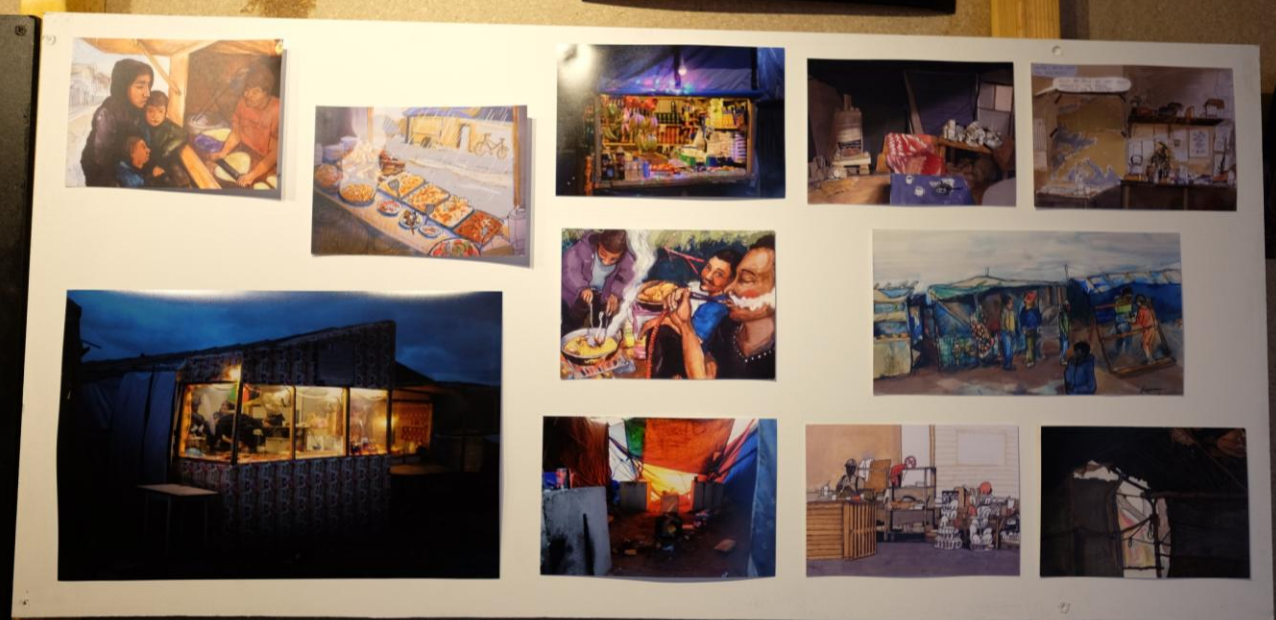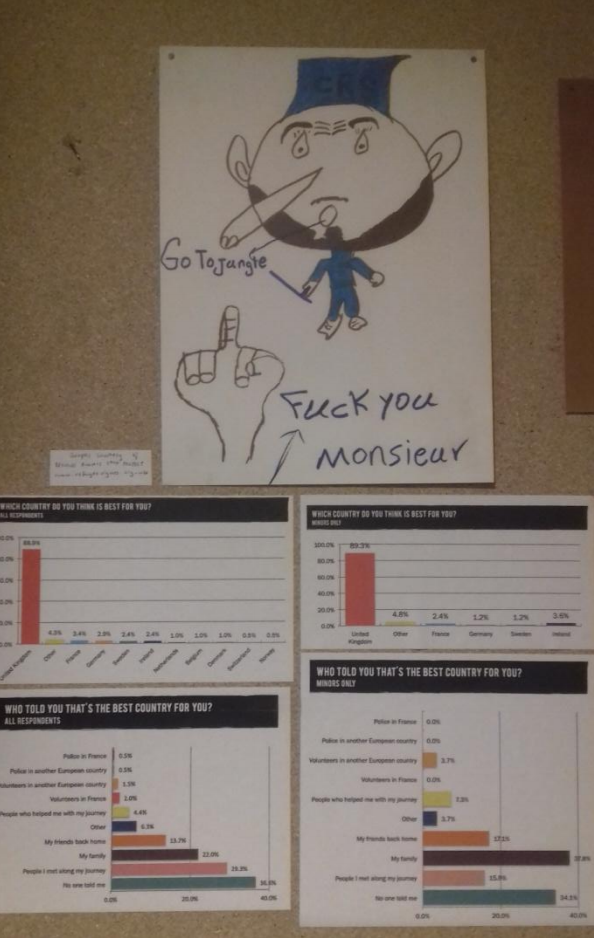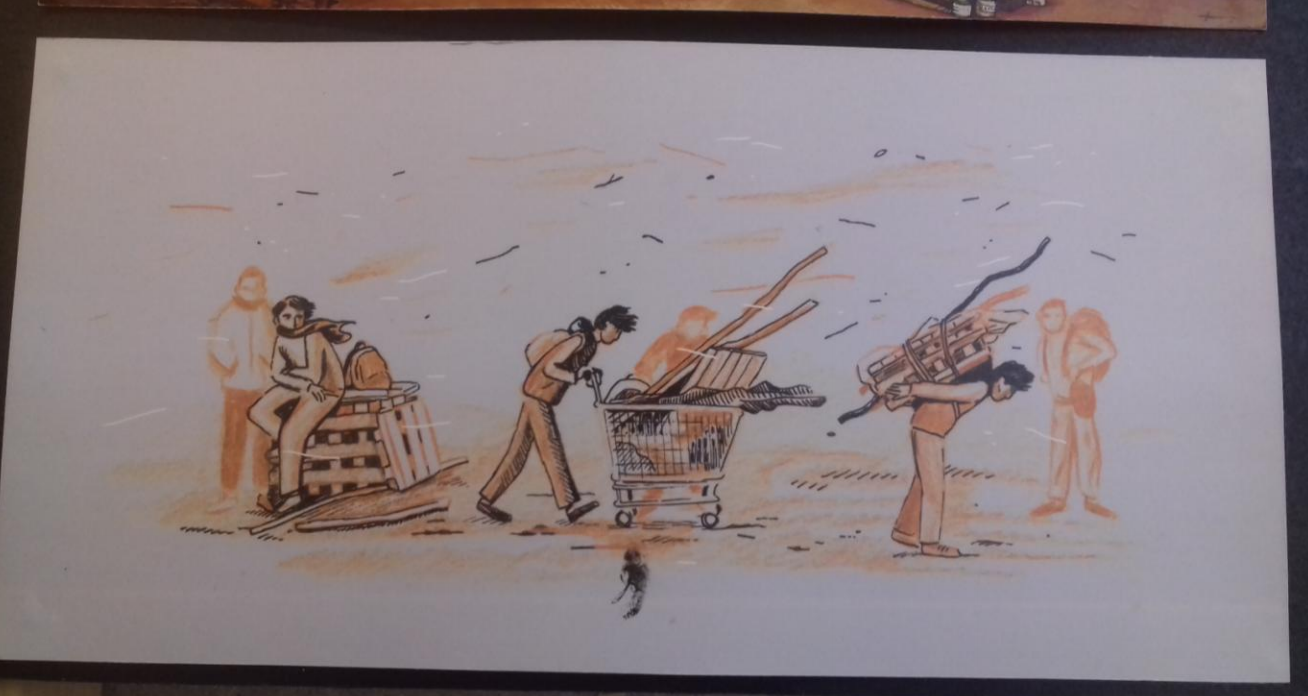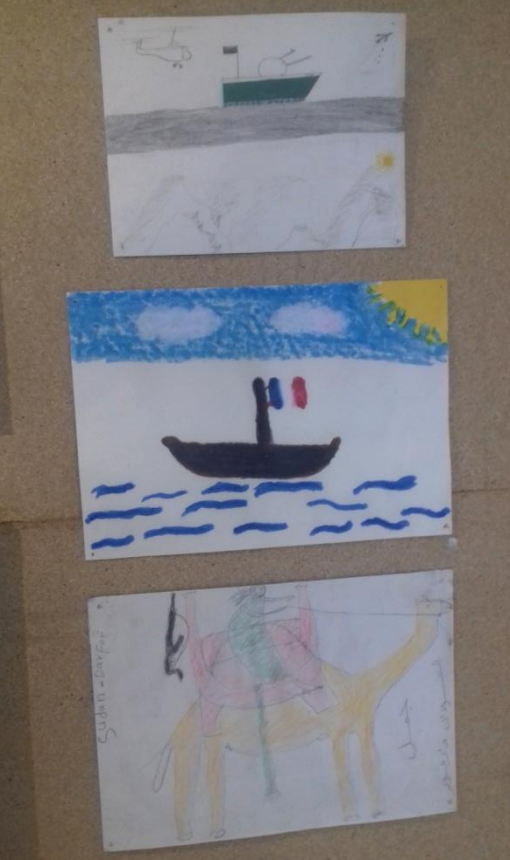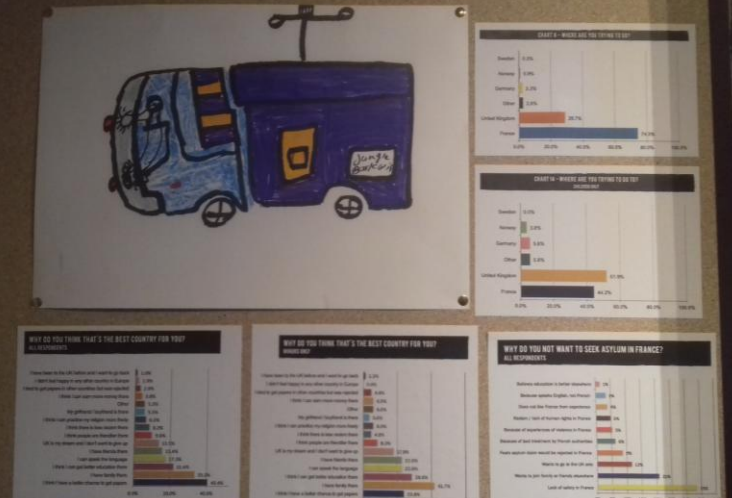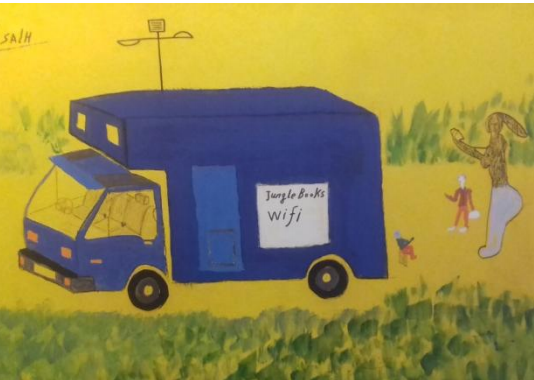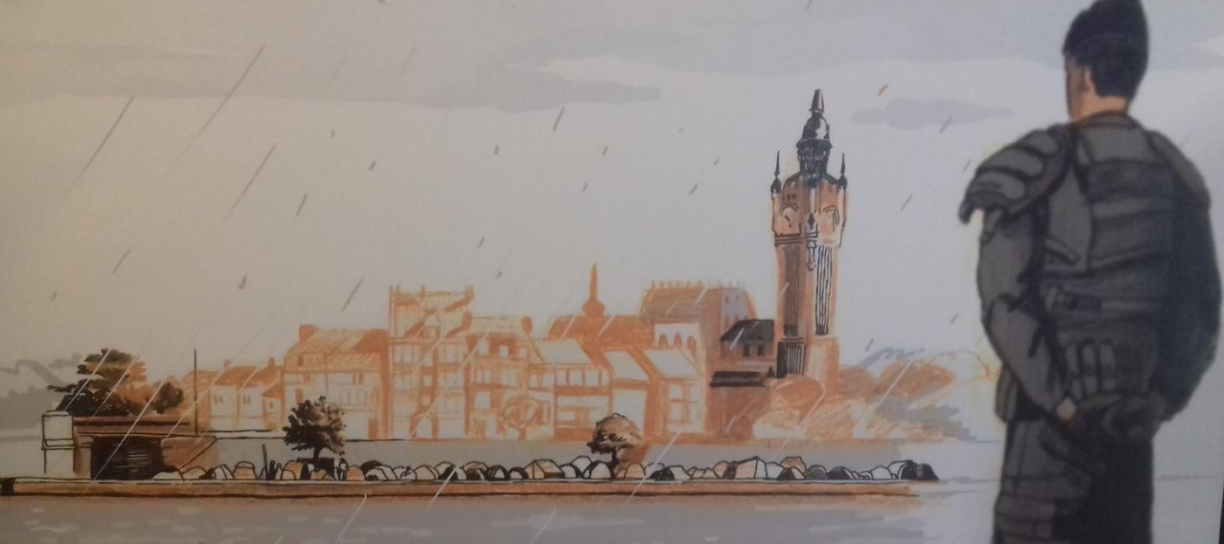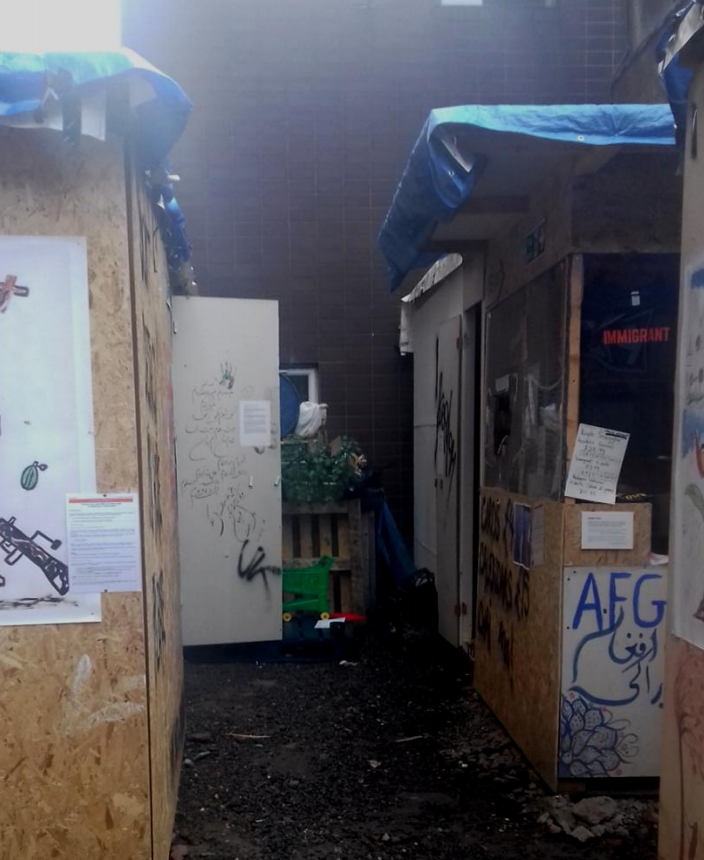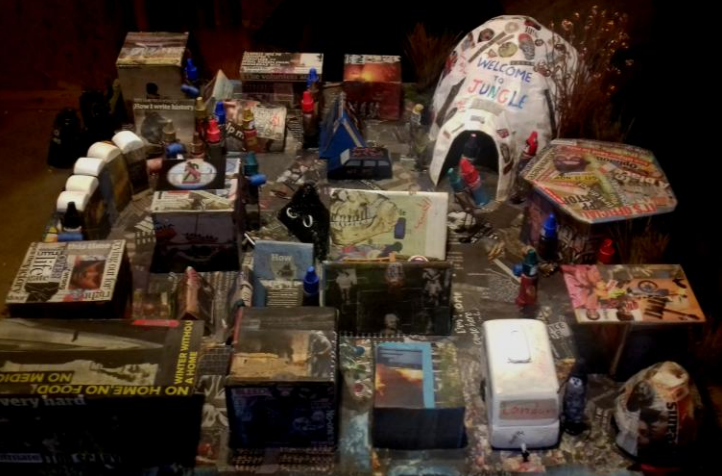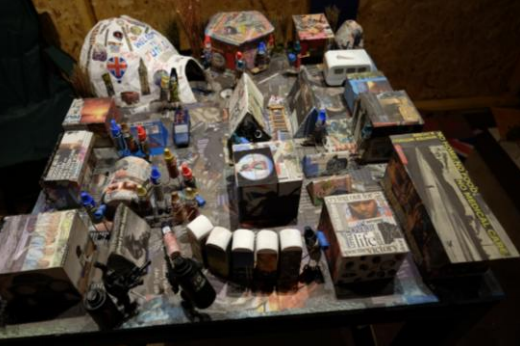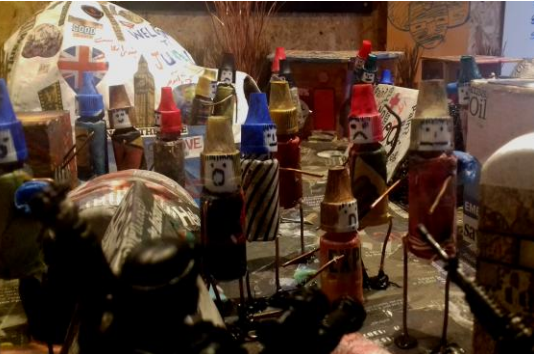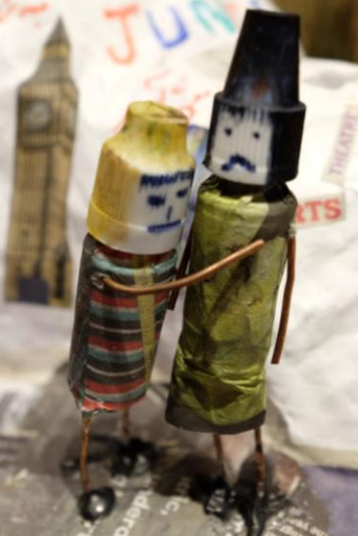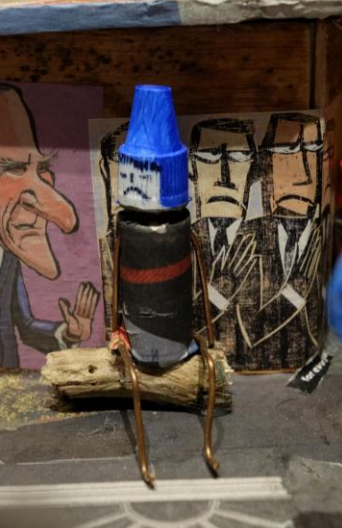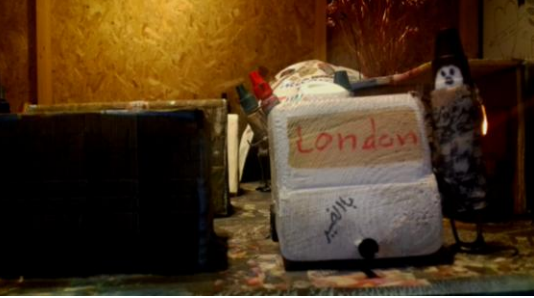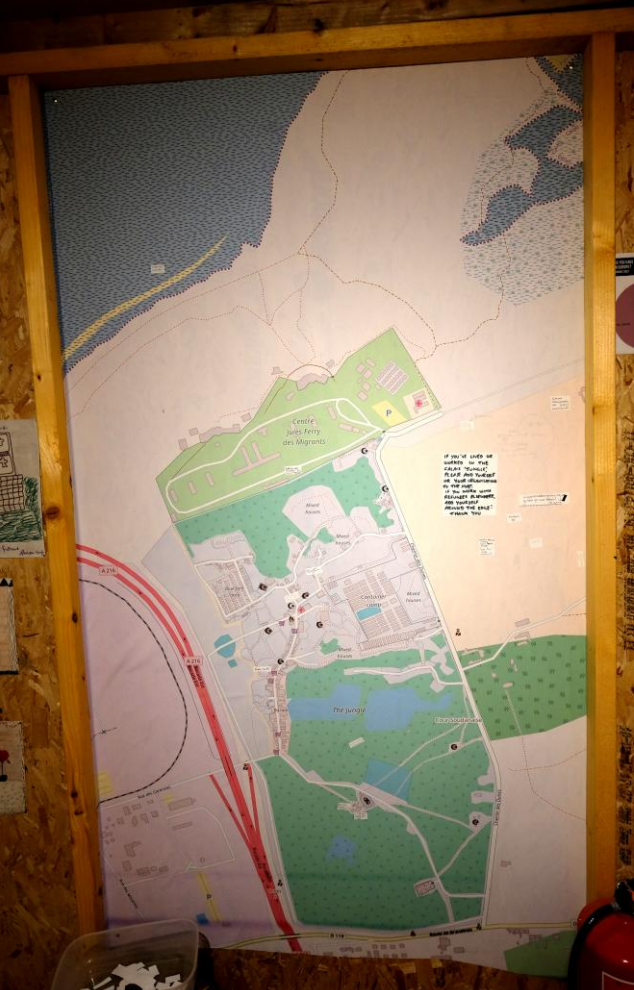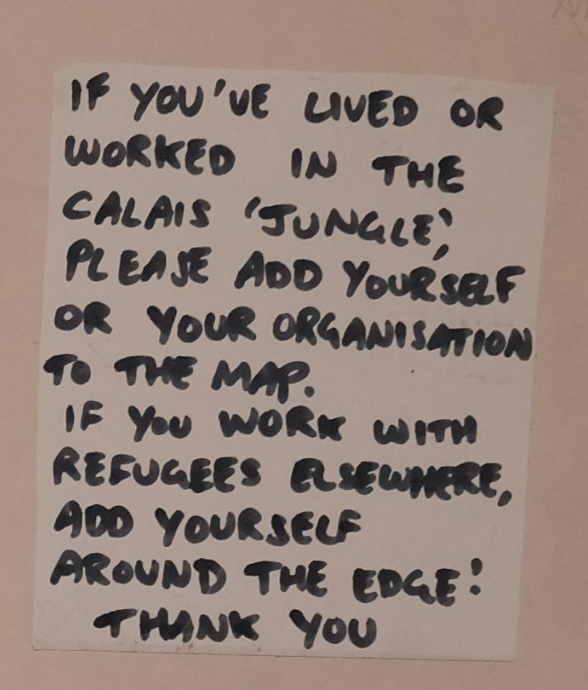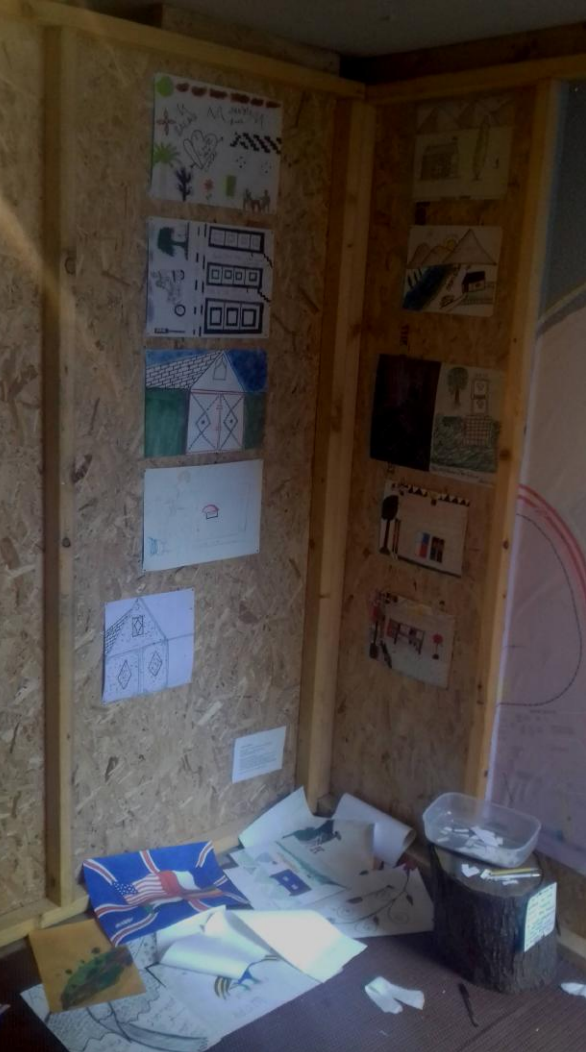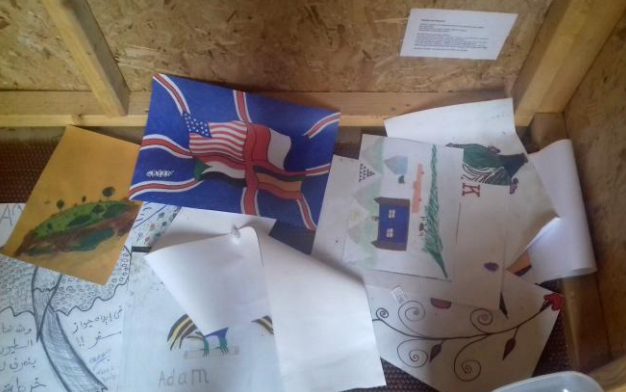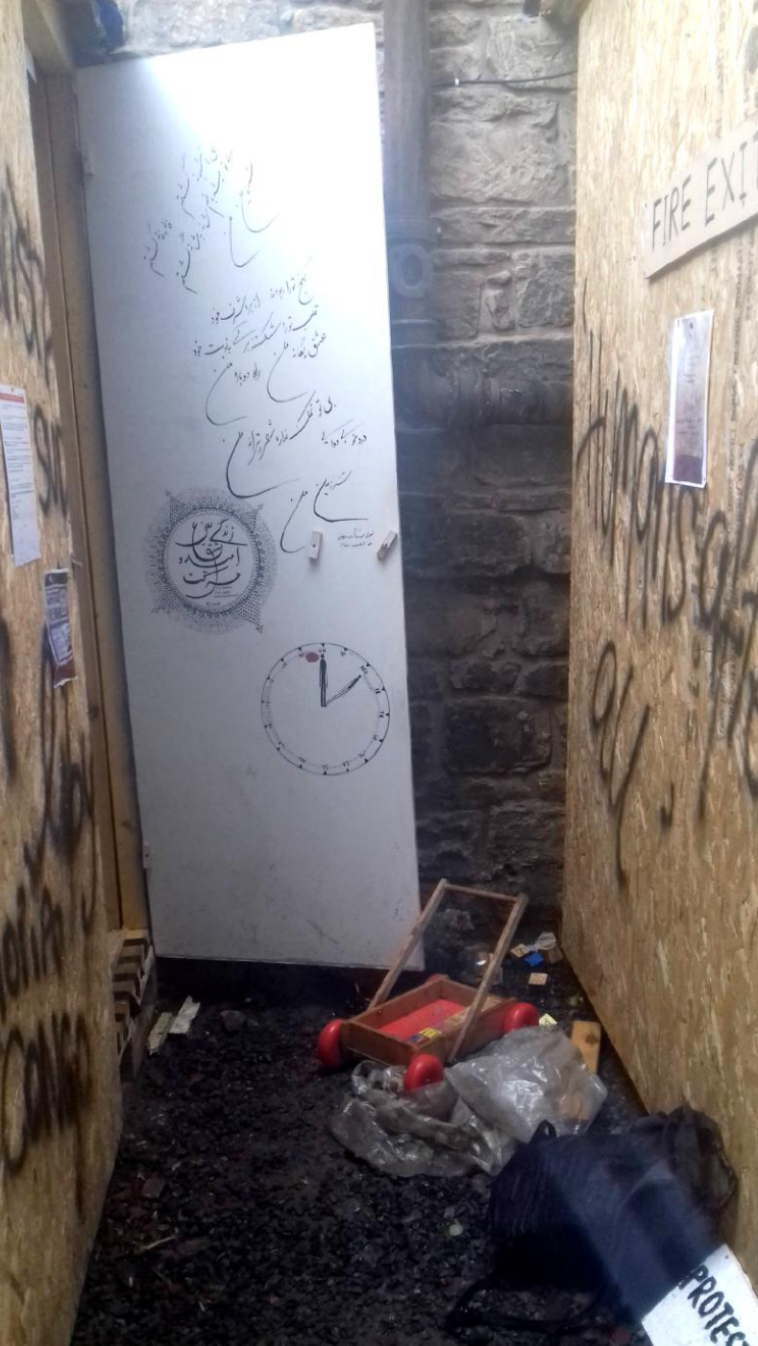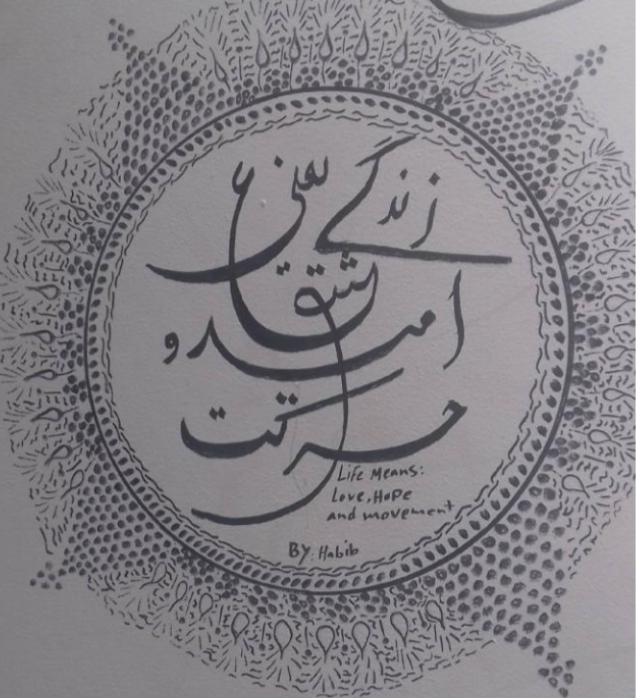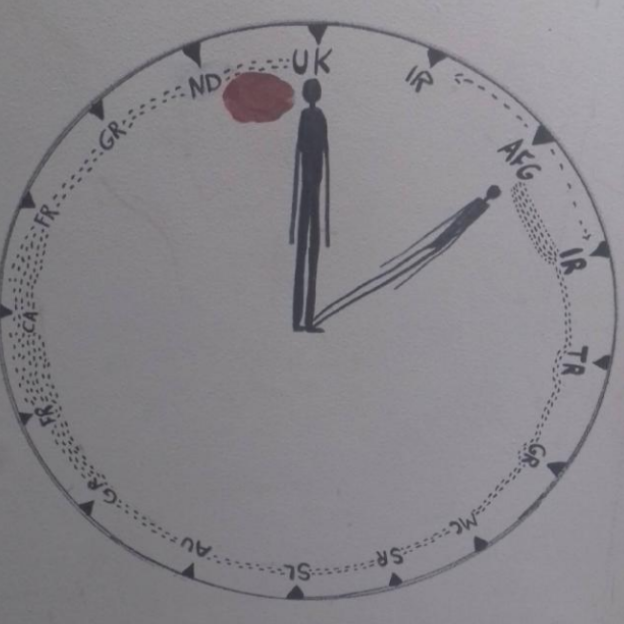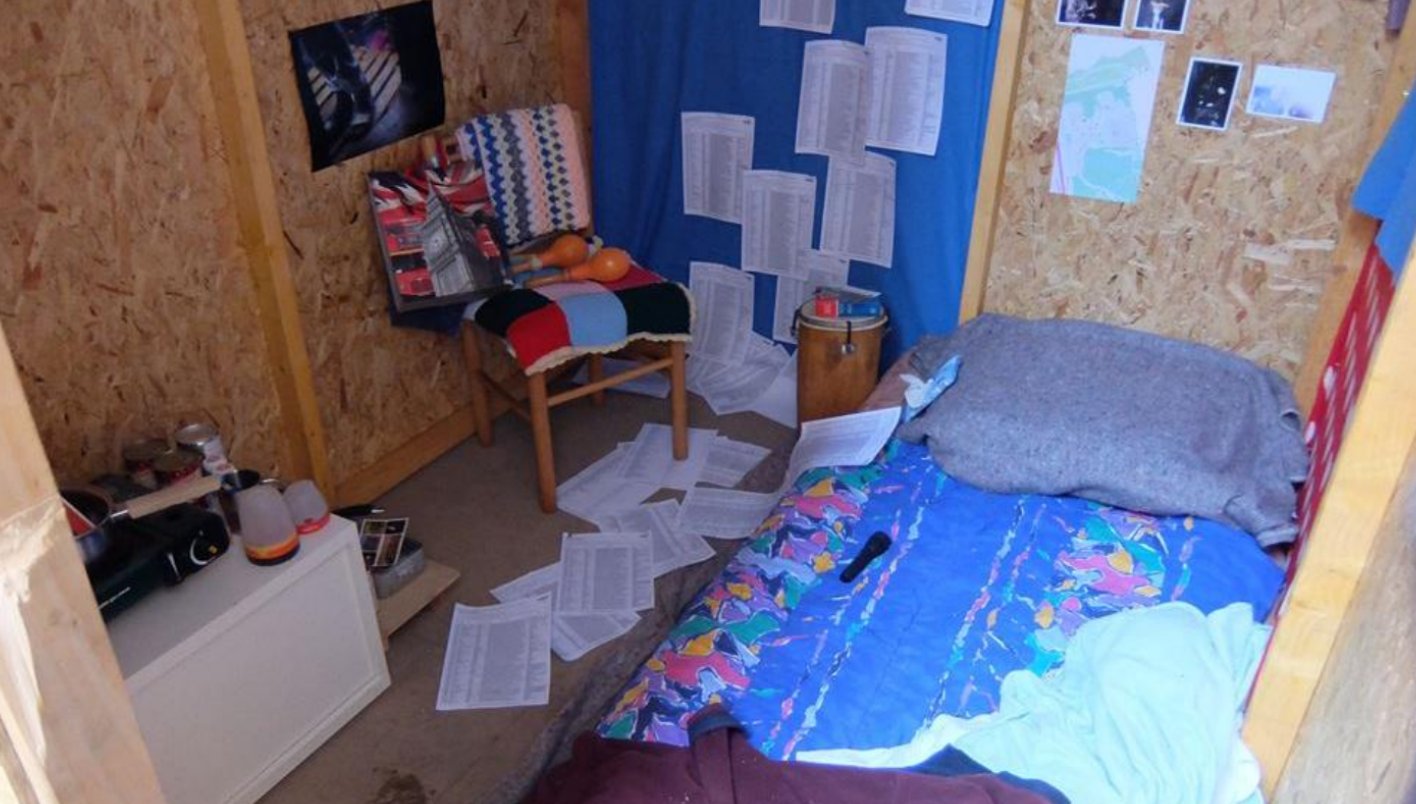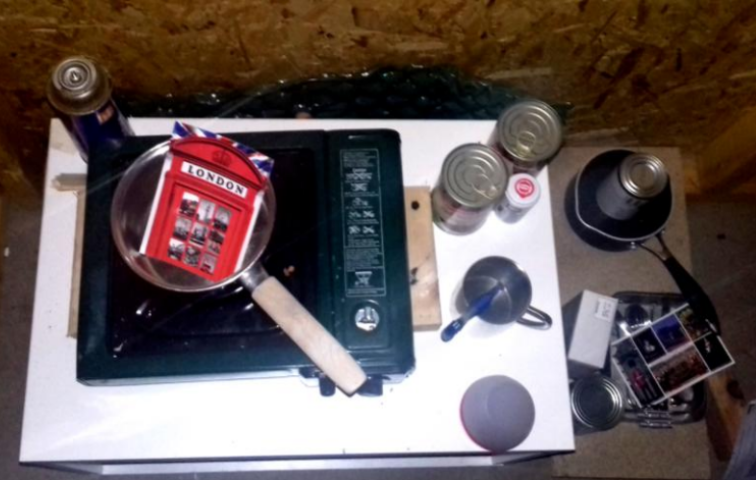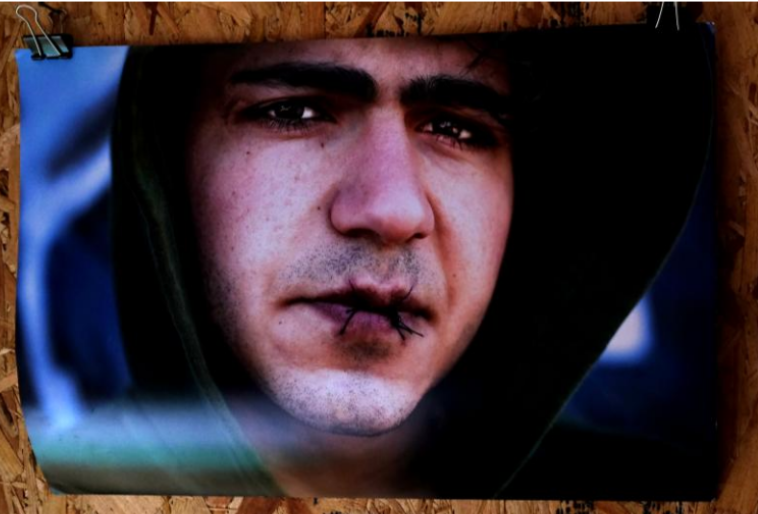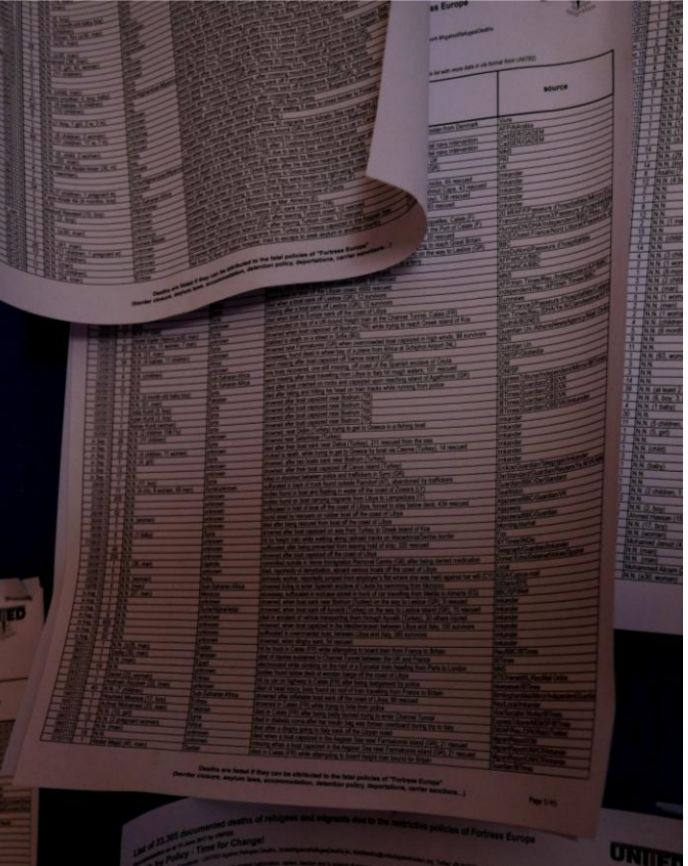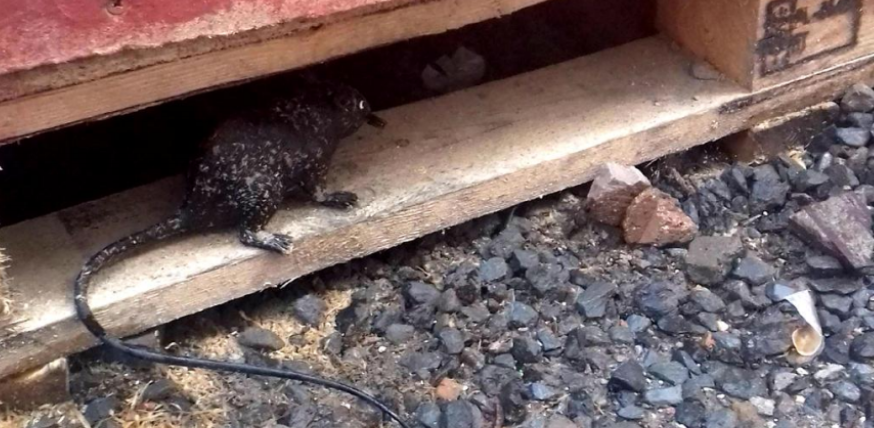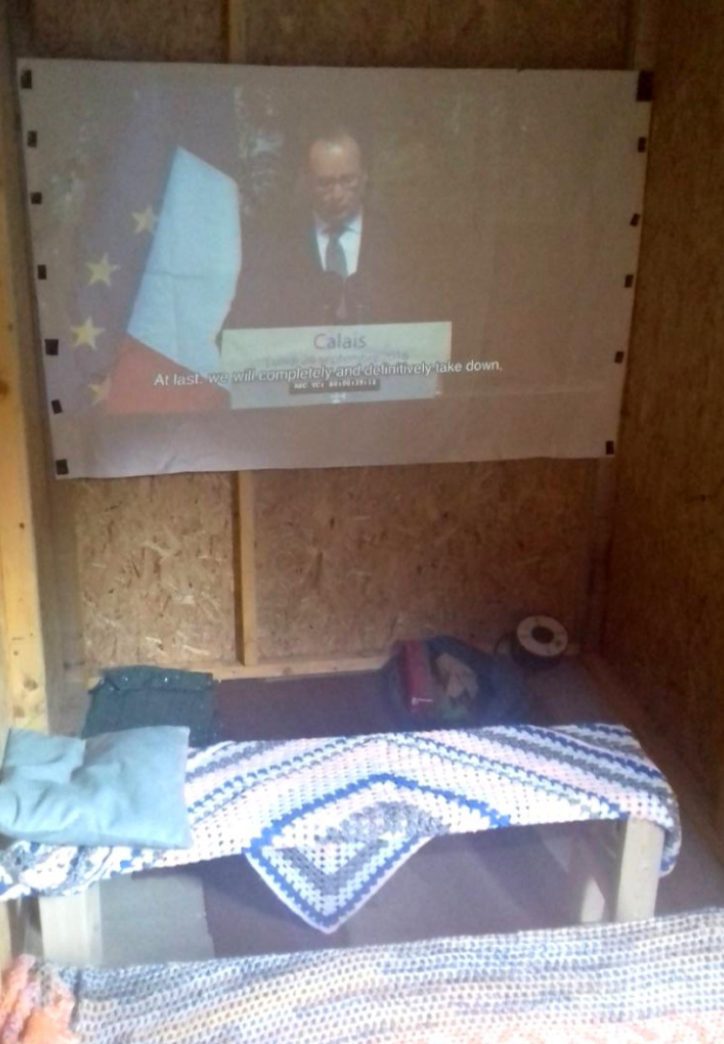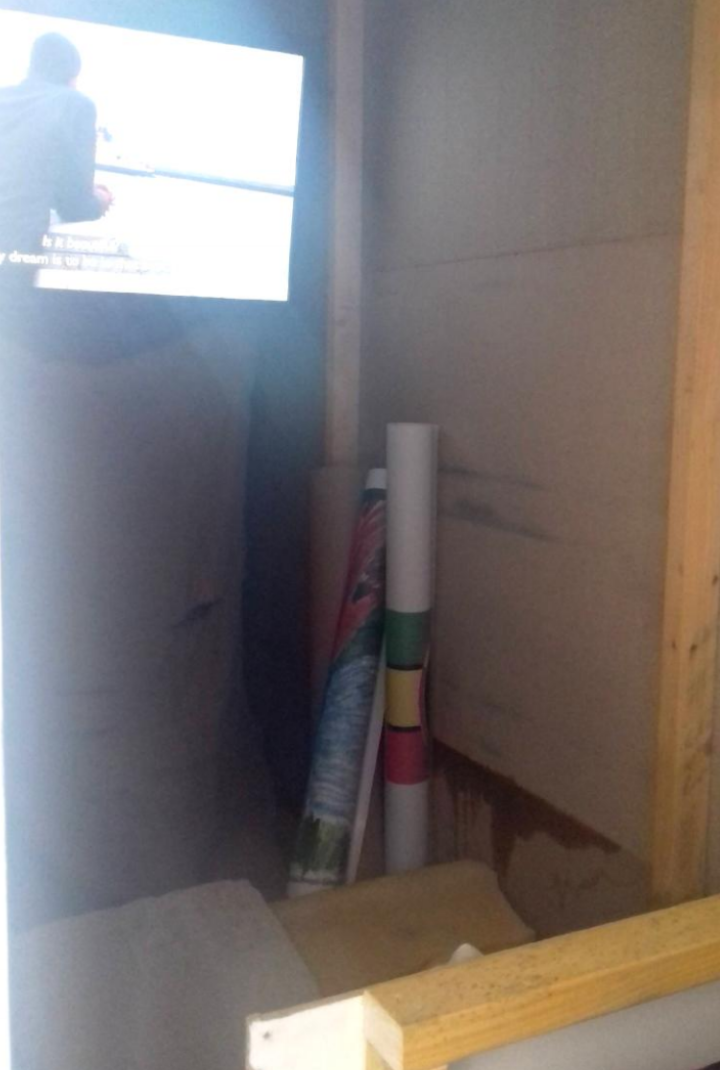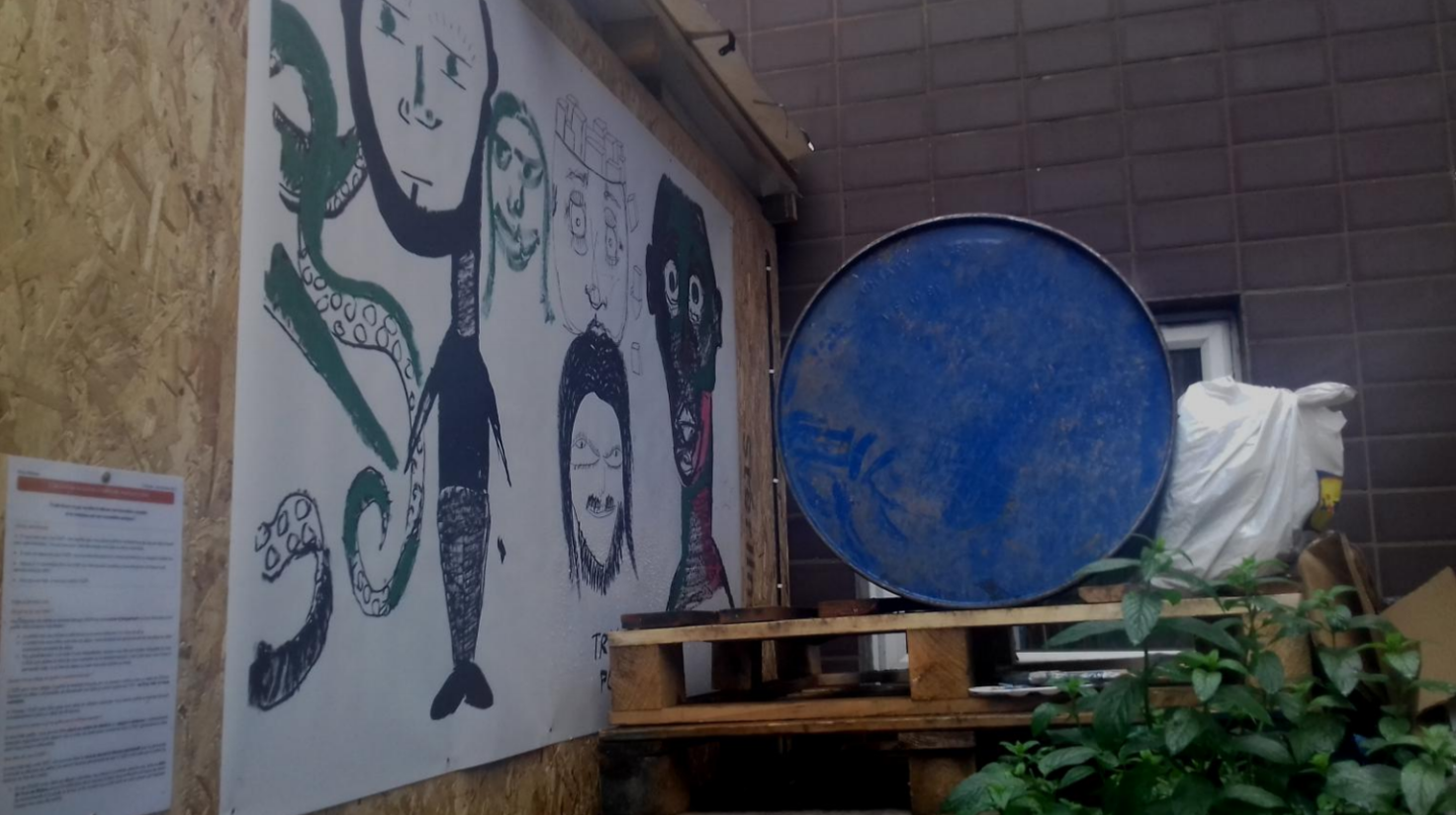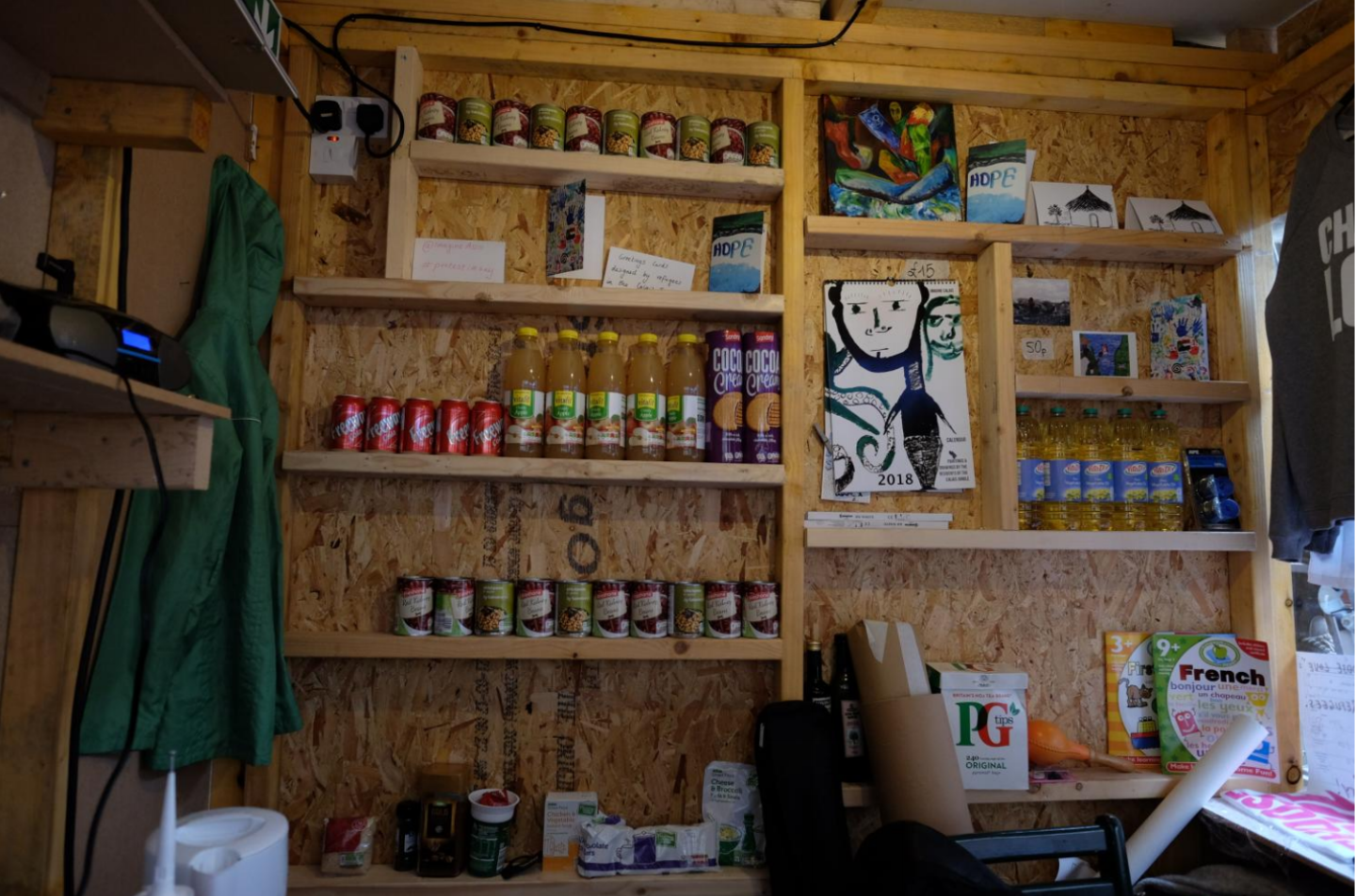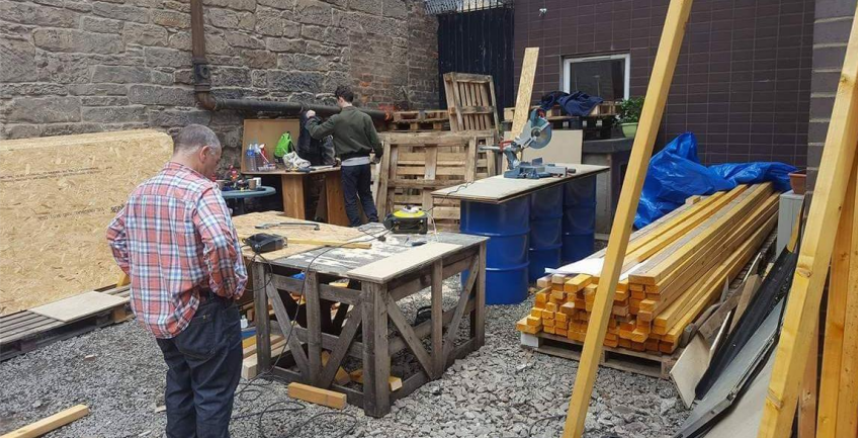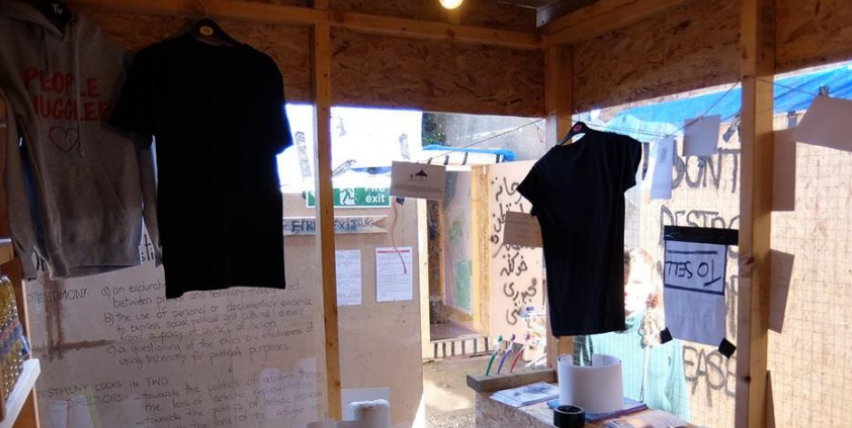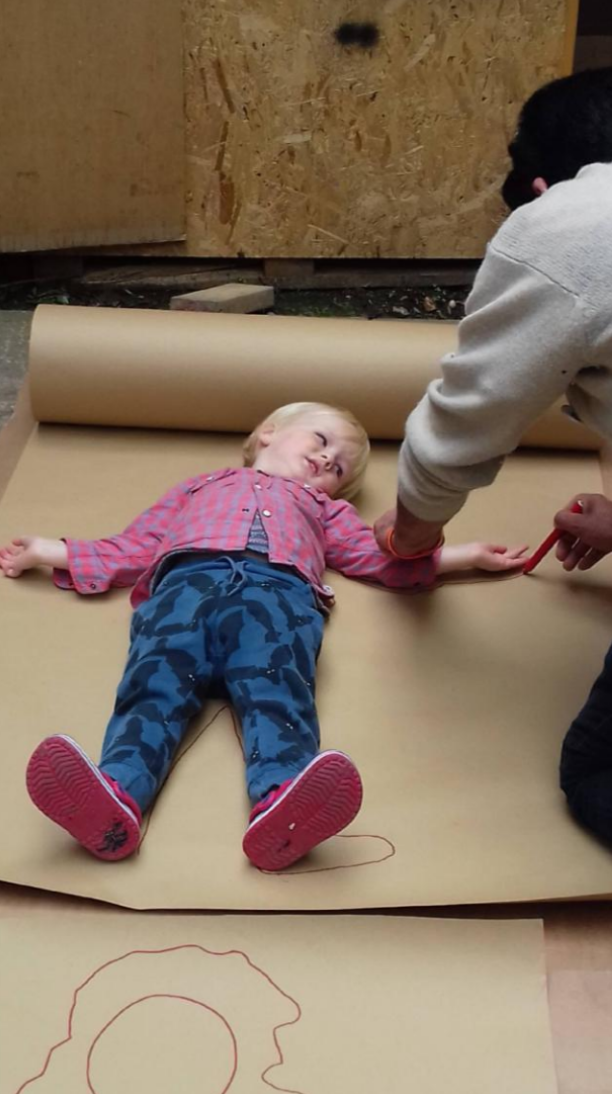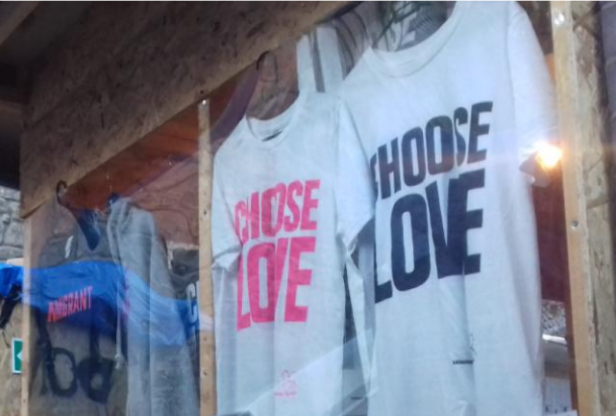Protestimony
As part of her research into how humanitarianism has been changed by Calais, Hari Reed and collaborators have curated an exhibition currently showing at the Edinburgh Festival. Here she showcases some of the images, questions and dilemmas of the show. Protestimony will showing in Norwich as part of Refugee History's Being Human Festival in November.'
What is “Protestimony”?
a) An exploration of the relationship between protest and testimony through art. b) The use of personal or documentary evidence to express social, political and cultural dissent from a policy or course of action. c) A questioning of the ethics and effectiveness of using testimony for political purposes.
Protestimony looks in two directions:
-- towards the politics of refugees through the lens of artistic representation.
-- towards the politics of artistic representation through the lens of the ‘refugee crisis’.
Timeline of the Calais Jungle
1990s: Refugees come to Calais from former Yugoslavia.
1999: Sangatte Refugee camp opens by Red Cross to shelter 600 people.
2001: Eurotunnel claims it is stopping 200 refugees per night. It is stormed by 500 people. December
2002: Sangatte camp is closed. UK gives temporary work permits to 1,250 Kurds and Afghans. France gives residency to 400 refugees.
April 2009: French police arrest 190 people at one of the small camps that have formed since the closure of Sangatte. September
2009: Another raid takes place on a small camp near the port. 276 people are arrested and the site is bulldozed.
July 2014: French police raid another ‘Jungle’ camp that has sprung up in Calais.
October 2014: 350 refugees try to climb on trucks at Calais port, French Riot police respond with tear gas.
January 2015: France opens the Jules Ferry Centre to shelter 50 women and children. Approximately 1,000 people are sleeping rough in the newest and most famous version of the ‘Jungle’ camp. A second camp emerges in Dunkirk.
June 2015: Calais council estimates that 3,000 people are camping around the town including 60 unaccompanied children.
23-24 and 29-30 June 2015: A strike by ferry workers caused traffic jams in Calais. Hundreds of Jungle residents tried to break into the stationary lorries queuing for ferries bound for Britain. This led to violence and the closure of the ferry port and Eurotunnel.
27 June 2015: The UK announces that it will building more than two miles of high-security fencing at the Channel Tunnel port in Calais.
2 September 2015: The body of the small Syrian child Alan Kurdi is found on a beach in Turkey. The image of this drowned child spreads globally and briefly sparks a more sympathetic approach to refugees entering Europe, including...
September 5th Angela Merkel’s announcement that Germany will take in an unlimited number of refugees.
12 September 2015: Europe-wide ‘refugees welcome’ demonstrations take place.
November 2015: 6000 live in the Jungle.
13 November 2015: A series of terrorist attacks take place in Paris, killing 130 civilians. This makes the tide of public opinion, heavily fuelled by mainstream media, reactionary and defensive again. 30 December 2015: The UN refugee agency reports that more than one million migrants and refugees had reached Europe by sea in 2015. 3,735 had died or were lost at sea. February 2016:The Refugee Rights Data Project recorded 96.8% males and 3.2% females in the Jungle camp.
29 February - 16 March 2016: The southern half of the Jungle camp is demolished and the container camp is built. 129 unaccompanied minors get lost in the process. ‘No Borders’ activists resist.
7 March 2016: The Grande-Synthe camp - France's first ever internationally recognised refugee camp - opens in Dunkirk, where living conditions for refugees were even worse than in the Jungle. The mayor of Dunkirk asks Medécins Sans Frontieres to build the camp for 2,500 people after the French government refuses to contribute.
March 2016: Calais residents protest. David Cameron announces £17M plan to help France deal with the refugees. April 2016: MPs reject “Dubs Amendment” to the Immigration Act, calling for Britain to take in 3000 refugee children.
May 2016: MPs accept the reformulated “Dubs Amendment” which no longer specifies how many unaccompanied refugee children Britain must take in, and shifts responsibility to local councils. The first Dubs children entered in October 2016: about 50 girls from Eritrea.
September 2016: Just before the demolition of the ‘Jungle’ camp, a census from Help Refugees put the overall population of the Jungle at 10,188. This included 1,179 minors, of which 87% were unaccompanied.
October 2016: 21 children with family in the UK are brought to England under the Dublin III law - an EU law which the UK chose to opt into (it also facilitates deportations to other EU member states). Anti-immigration campaigners dispute their age and call for dental exams.
24th October 2016: The demolition of the Calais ‘Jungle’ begins. Refugees are bussed to accommodation centres around France.
March 2017: After accepting only 350 unaccompanied refugee children under the Dubs Amendment, the government cancelled the Dubs scheme. It also cancelled the fast-track Dublin III scheme to help those who already have family here. As a result, many children returned to Calais to sleep rough.
March 2017: The mayor of Calais, Natalie Bouchart, bans charities from distributing food to the refugees who have returned to the port town. Today: Refugees continue to arrive in or return to Calais, undeterred by the demolition of the Jungle. There are reports of French police tear gassing sleeping refugees, including children, taking their sleeping bags and clashing violently with volunteers distributing aid.
Why are we STILL talking about Calais?
But when did we begin talking about Calais? Calais has always been a port town, people have always moved through it. Calais was a territory of England from 1347–1558. Even today, because of the Le Touquet Agreement, the English border is still technically in Calais. (n.b. this agreement is between UK and France, not the EU, so won’t necessarily change as a result of Brexit). Refugees have congregated there since the Yugoslavian War in the 1990s. Yet there is still no infrastructure to deal with this phenomenon. For years, ‘Jungles’ in Calais have come and gone, but we are yet to find a
Support and Solidarity Organisations in Calais
The ‘Jungle’ camp in Calais - unlike Dunkirk - was not an officially recognised refugee camp. This means that large humanitarian organisations could not operate there. If they did, they risked alienating the European governments that they rely on for funding.
This created an aid vacuum in Calais.
Gradually, this vacuum was filled by French, British and Irish voluntary grassroots organisations created for the purpose. People with no experience in humanitarian aid work gave up their free time to cook, teach, collect donations, campaign and fundraise. Some of these tiny organisations, like Help Refugees, grew in response to need and have become leading figures in the ‘refugee crisis’.
We can learn important lessons from the Jungle.
It is a place that brought people together, at the same time as it tore people apart.
So what’s the situation today?
Kay Pinto, a refugee activist and teacher, recalls the situation she found in Calais on the 24th July 2017.
One thing I was surprised about was the number of people that were there. I spoke to a lot of people who were under eighteen. I spoke to a 13 year old boy and two girls - 15 and 17 years old. Unlike before, there is nowhere for them to go, so they are sleeping in the woods. That’s what is so shocking - people are living like animals in the woods. The boys I spoke to, they look as though they are sleeping in the woods. They look dirty, dishevelled. The look in the youngest boy’s eyes haunts me even now. It was a look of sadness and hopelessness.
The other thing that struck me was that the needs haven’t changed. They don’t even have access to water. They found a contaminated water source and it made them all ill. How can this still be happening in France, down the road, with people whizzing past, going on holiday?”
Organisations in the Jungle We believe it is important to record in one place the voluntary organisations that provided aid and support in the Jungle and in Dunkirk. These include:
Acted
Art Refuge UK
Art in the Jungle
Ashram Kitchen
Auberge des Migrants
Belgium Kitchen
Cabane Juridique
Calaid
Calais Action
Calais Migrant Solidarity (No Borders)
Calais Ouverture Humanité
Calais Sessions
Caravans for Calais
Care4Calais
Croix-Rouge Française
Darfour School
Ecole Chemin Des Dunes
Emmaüs
First Aid Caravans
France Terre d’Asile
Good Chance Theatre
Gynécologie Sans Frontières
Help Refugees
Hummingbirds
Imagine Association
Jungle Books Library& School
La Vie Active
Médecins du Monde
Médecins sans Frontières
OFII
Re-Act Edinburgh
Refugee Community Kitchen
Refugee Info Bus
Refugee Youth Service
Safe Passage
Salam
Secours Catholique
Utopia 56
Women and Children’s Centre
Dignity and Respect
There’s a protocol for displaying artworks: we treat them with respect. We value them. The same protocol doesn’t always apply to humans. People aren’t guaranteed respect. But how can we guarantee respect?
Is it more respectful to display a refugee’s artwork on the walls than on the floor...
If the artwork can travel to the UK but the artists can’t.
Is it more respectful to display a refugee’s artwork on the walls than on the floor...
If we still call them ‘refugee’ or ‘migrant’ and treated differently for it?
Is it more respectful to display a refugee’s artwork on the walls than on the floor…
When Europe’s restrictive policies have directly caused 33,305 deaths since 1993?
“I understand why people have to leave their country, but why do they have to come to the UK?”
This is a common and valid question, with many different answers.
1. Family reunification Statistics from The Refugee Rights Data Project show that 33.4% of refugees in Calais - and 41.7% of minors - are hoping to join their family in the UK. ALL minors with family members legally in the UK have a legal right to join them under the Dublin III law.
2. Most refugees don’t come to the UK The UK hosts less than 1% of the world’s refugees. In comparison, refugees make up a fifth of the population of Lebanon. According to the International Business Times, ‘In the first quarter of 2015 alone,185,000 first-time asylum applications were made in the EU. Half were in Germany (73,100 or 40% of the total) and Hungary (32,800 or 18%). Then, according to the EU statistics, came Italy (15,200, or 8%), France (14,800, or 8%), Sweden (11,400, or 6%), Austria (9,700, or 5%) and the UK (7,300 or 4%)
3. ‘Push’ factors Often, refugees are not pulled to the UK, but pushed away from other countries. The first “safe” countries that refugees enter - Bulgaria, Greece, or Italy, for example - are not, in fact, safe. They are overwhelmed and cannot provide for all the refugees currently there. In Calais, the Refugee Rights Data Project reports that 33% of adults and 49% minors feel unsafe in France, likely because 89.2% of respondents reported experiencing police violence in Calais, and 58.7% reported citizen violence. Similar experiences are reported in other European countries, particularly Hungary. In addition, 74% of French asylum applications are rejected, so refugees don’t feel they have a chance of being granted asylum there.
4. Reputation of the UK Many of the reasons that refugees wish to come to the UK are related to the colonial history of the British Empire. In countries like Pakistan and Sudan, lasting cultural connections and an impression of the UK as a fair and admirable place have remained and influence asylum decisions.
5. Language Many refugees speak English because they went to an ex-colonial school or college, or because it remains one of their national languages following colonial rule there. They feel they have a better chance of surviving in a place where they speak the language.
6. War In places such as Afghanistan, where the UK military has intervened, refugees who previously worked with, met or supported the UK or US armies, diplomats or aid organisations, and whose lives are now in danger for this reason, believe they will have a better chance of being granted asylum the UK. They already have links to or networks in the UK.
7. Religion Some refugees are Christians fleeing persecution for their faith. They perceive England as a Christian country due to the many missionaries the UK has sent to other parts of the world over the centuries. Others believe that the UK is a more tolerant and less racist or prejudiced place than other countries in Europe, so they will be free to practise their religion here.
Is this Voyeurism?
The short answer is… Yes, it is.
The long answer is actually a question… How can we escape voyeurism in awareness raising exhibitions?
Would it be better to provide a long list of information with no ‘emotion’ or ‘experience’? Would anyone read it? Would it inspire anyone to take action?
Is voyeurism the only way to generate the empathy and compassion required for collective action?
Is there any other way to inspire the FORCE of CHANGE?
Is voyeurism always exploitation? Is it possible to consent to voyeurism?
Is it possible to learn or understand through voyeurism?
What is being sacrificed in this attempt to understand and who is sacrificing it?
Is there any other way?
Representing Refugees
Usually, groups that require international assistance don’t get enough media attention. In 2015-16, the ‘Calais migrant crisis’ had the opposite problem: too much of a certain type of media attention. In the mainstream press – especially the Daily Mail and the Sun – reporting was, and is, antirefugee and anti-migrant. Their constant negative representations of refugees increase fear and distrust between refugees and citizens. They can also be racist and islamophobic.
But positive, supportive representations of refugees aren’t free from criticism either. These are some of the things that people who wish to support refugees struggle with:
- Sometimes, stories that aim to help refugees can be patronising.
- Sometimes, they can sound a lot like old-fashioned colonial stories of the ‘West’ saving the ‘others.’
- These stories can increase the sense of opposition between ‘us’ and ‘them’, where ‘we’ are the people who help and ‘they’ are the people who suffer.
- Some positive representations created by non-refugees can drown out the voices of refugees and how they choose to represent themselves.
- Constantly defining someone as ‘a refugee’ makes it seem like this is the most important thing about them. It makes it seem like they will only ever be ‘a refugee’, when actually a refugee is many other things as well.
- Some stories that aim to create sympathy for refugees can be dehumanising. By making the audience feel pity for refugees, the writers create a hierarchy based on humanitarian aid rather than an act of political solidarity.
- Only focussing on positive achievements of refugees can give people an unrealistic expectation of what refugees can or should achieve: everyone has a right to safety, not just exceptional, talented people.
Short Documentaries
Between Death’s Fingers by Majd Munawar
Some people become refugees; others are born refugees. This short documentary shows how the history of Palestine has become part of family history for Palestinians, and how politics reaches into the most personal and intimate parts of life for those born without a state. Majd hoped to attend this exhibition but his visa application was denied. Length: 10 min.
Trapped - Joe’s Story in Calais by Frederik Subei
Joe came from Syria to start a new life in the UK. But the reality is harsh in the French border town of Calais. In an attempt to cross the channel he gets trapped in a tanker truck. This powerful short film tells his story. Length: 5 min.
The Calais Jungle by Babak Inaloo UNESCO
Global Media and Information Literacy Babak is a photographer and poet from Iran who, after spending eight months in the Calais Jungle, was one of 80 refugees offered a place at Lille University. Length: 6 min.
Is this exhibition right or wrong?
Is displaying artwork about refugees in order to raise awareness a ‘good’ thing to do? Or is it just plain wrong to use art that refugees have created, in a place where many of them will never get to go? Is it wrong to embrace the emotions that arise when finding out about the suffering of others – shock, horror, disgust, fascination? Is it exploitation? Are we just consuming the pain of refugees, even when we try to achieve more? Is it impossible to create ethical art in such an unethical world?
And if the answers to these questions are so unclear, what’s the point in this exhibition at all?
Why not just stick with politics and law? Why involve art at all? Because art does some things that politics can’t do. Art never claims to know everything, to tell the whole story, to be right all the time. Art asks you the questions where politics tells you the answers. Art is an open door. And if there’s one thing that refugees need in this world, it’s an open door.
Credits
The Protestimony exhibition displays artwork created by refugees at IMAGINE workshops in the summer of 2016. The other contributors are:
Art in the Jungle: ‘Art in the Jungle’ Photo Essay
Adrien Weber: Animations
Babak Inaloo: Poetry and Documentary Beatrice Lily Lorigan and the Refugee Info Bus Citizen Journalism Project: Photography
Calais Action Archive: Posters
Charlotte Maxwell: Photography
Derrie Pearson: Construction
Frederik Subei: Documentary
Habib Sadat: Sculpture, Painting and Construction
Hadrien Lafont: Construction
Hannah Kirmes Daly: Illustrations
Hari Reed: Written Content
Jack Vickerman: Construction
Jean Richter: Documentary
Louise Druelle: Illustrations
Majd Munawar: Documentary
Mapfugees: Calais Map
Refugee Info Bus Archive: Posters
Refugee Rights Data Project: Graphs
Renyu P’ng: Construction
Sue Clayton: Documentary
Tomo Brody: Documentary
United Against Racism: List of Deaths
Zara Vando: Construction


